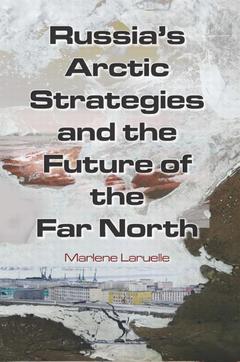Russia's Arctic Strategies and the Future of the Far North
Auteur : Laruelle Marlene

This book offers the first comprehensive examination of Russia's Arctic strategy, ranging from climate change issues and territorial disputes to energy policy and domestic challenges. As the receding polar ice increases the accessibility of the Arctic region, rival powers have been manoeuvering for geopolitical and resource security. Geographically, Russia controls half of the Arctic coastline, 40 percent of the land area beyond the Circumpolar North, and three quarters of the Arctic population. In total, the sea and land surface area of the Russian Arctic is about 6 million square kilometres.
Economically, as much as 20 percent of Russia's GDP and its total exports is generated north of the Arctic Circle. In terms of resources, about 95 percent of its gas, 75 percent of its oil, 96 percent of its platinum, 90 percent of its nickel and cobalt, and 60 percent of its copper reserves are found in Arctic and Sub-Arctic regions. Add to this the riches of the continental shelf, seabed, and waters, ranging from rare earth minerals to fish stocks. After a spike of aggressive rhetoric when Russia planted its flag in the Arctic seabed in 2007, Moscow has attempted to strengthen its position as a key factor in developing an international consensus concerning a region where its relative advantages are manifest, despite its diminishing military, technological, and human capacities.
Date de parution : 12-2013
15.2x22.9 cm
Date de parution : 12-2013
15.2x22.9 cm
Thème de Russia's Arctic Strategies and the Future of the Far North :
Mots-clés :
northern; sea; route; council; bering; region; novaya; zemlya; barents; continental; MTO; Novaya Zemlya; National Security Strategy; Northern Sea Route; Arctic Council; North Caucasus Federal District; Yamalo Nenets Autonomous District; Murmansk Shipping Companies; Exclusive Economic Zone; Barents Sea; USS Nautilus; Russian State Statistics Service; NATO Involvement; Northern Fleet; Arctic Coast Guard Forum; Northern Sea Route Administration; Dmitri Medvedev; Lomonosov Ridge; NATO’s Presence; Continental Shelf; Arctic Policy; International Arctic Science Committee; Young Men; Arctic Environmental Protection Strategy; Nord Stream Natural Gas Pipeline



